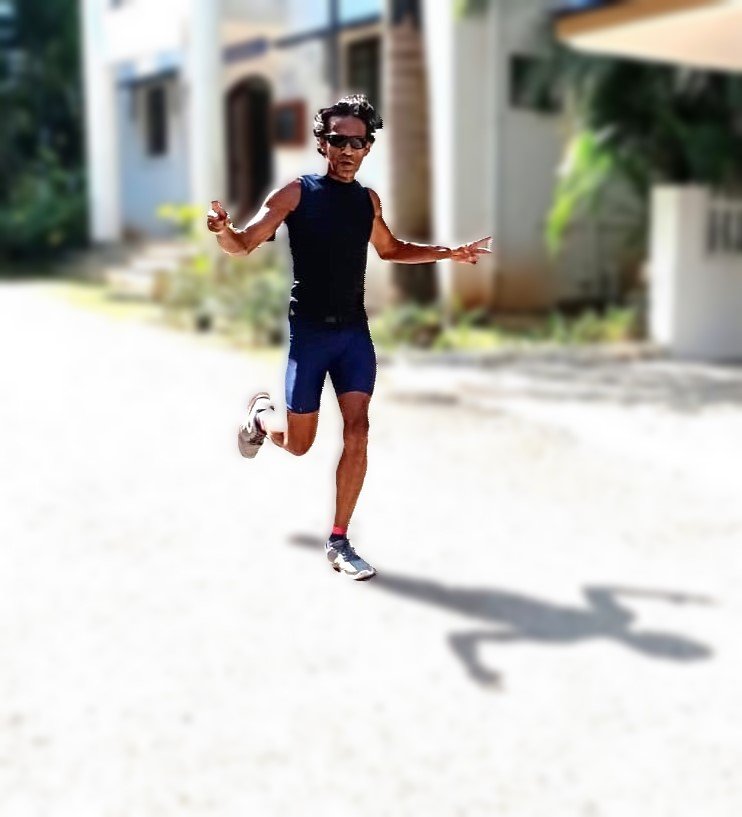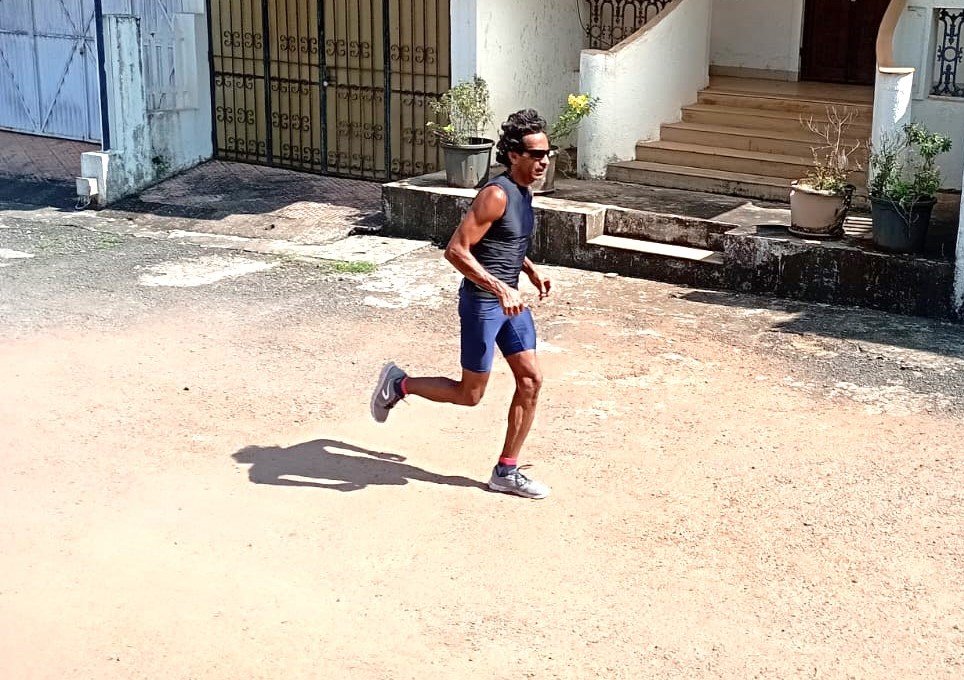- Rejecting all the myths about running after 40
- Tips to continue running After 40 and beyond
- Don't let your doubts about running after 40 get to you –
- There is no need to make drastic diet/nutrition changes
- Dealing with cravings for unhealthy food
- Running After 40 – Pay attention to your posture
- You need 2-3 sessions of strength training every week
- Give extra time for recovery
- Proper running gear
- Measure your performance
- Take time to stretch
- Mix it up
- You can do running After 40
Without mincing words, let me start by saying, “Just don’t listen to those who say that you cannot continue running after 40.” Those naysayers should step aside and allow others to do what they can or are trying to do. I am of this opinion because many people worldwide are actively running after 40, 50, and even beyond that and are fitter than most who don’t.
Ignoring the discouraging words from others about running after 40 is easy. It is difficult when you keep repeating those negative things to yourself. What you say to yourself matters. You can create self-doubt or go out there and test your limits. There are thousands of people like me to motivate or influence you to run, but the final call is something that you will have to take. You are your influencer.
If you have been leading an unhealthy lifestyle in your 30s, your body will likely become weak by the time you reach 40. An unhealthy lifestyle could include the absence of regular physical exercise, overeating, wrong food choices, sleep deprivation, alcohol abuse, and so on. Such lifestyle choices will take a toll on you when you age, and your body will show signs of deterioration.
Rejecting all the myths about running after 40
People told me how running long distances after 40 could adversely affect my heart health and lead to permanent physical injuries. This did get me thinking and create a bit of doubt in my mind, but not enough to make me stop running. I did not see any reason to stop running after 40 because it was (and is) doing me more good than harm. I cannot think of even one instance where it caused me harm.

My muscles toned, and breathing became easy. I was getting more confident with each mile or kilometer behind me. At one stage, I saw myself rejecting all the myths about running after 40. The way I see it now, running is a gift for your body and mind. It is an open source to push your resilience and endurance throughout your later years. You must continue running, break boundaries, and savor the limitless benefits.
Tips to continue running After 40 and beyond
Don’t let your doubts about running after 40 get to you –
I have already discussed it above. Remember, your mindset is the key to motivating you to run even after the age of 40. The more you focus on your age, the more you will doubt yourself. Your age is just a number. Just get started with low intensity and stay consistent with your efforts. You could start with three days of weak running initially to build up your running strength.
There is no need to make drastic diet/nutrition changes
You can continue your nutritional habits, provided you do not overload yourself with calories. The idea is to burn what you eat and not store it in your body. There is no need to search for a new diet program unless you have cultivated the habit of overeating or binging on unhealthy food.
We are constantly bombarded with food advertisements, and we don’t even have to go to restaurants to eat them. You can have them delivered to your doorstep in about 30 minutes. It is easy to exceed our caloric requirements, and it will soon show up in our bodies.
You should increase your protein intake and reduce carbs and oils to get the right energy for running. Also, your body will need sufficient vegetables, fruits, nuts, pulses, and greens. More importantly, it would help if you watched the portion on your plate. If you are eating healthy food and still gaining weight, then the culprit is more likely the portion size of your meals. You cannot metabolize all of it, even with physical activities. As you know, the result is fat accumulation in your body.
Dealing with cravings for unhealthy food
Cravings for sweets and junk food are not easy to beat. For me, it’s a constant struggle to say no to sweets. More often than not, I give in to the cravings. The point is that we all have cravings for foods that appeal to our taste buds, even though we know that they are not healthy.
Your fitness trainer will remind you about the discipline you should follow. I personally feel that strict discipline regarding food choices takes away the desirable flavors from our lives. It makes us dull and can build up frustration. We hold ourselves back and bottleneck our desires so much that they are bound to burst sometimes.
The best way to deal with it is with cheat days, once a week or twice a month. You can choose your cheat days depending on your fitness levels and goals. For example, one monthly cheat day is suitable for people with weight loss goals. That day, you could eat whatever your heart desires, provided you switch to the workout mode the next day. I repeat, you got to get back in action the next day.
Running After 40 – Pay attention to your posture
The idea of running after 40 is to become fit while avoiding injuries. You can do so by focusing on your running form or posture right from the beginning to the end of your session. Proper running form will also help you maximize your performance. It is easier to maintain your form while running on treadmills. However, it is not the same for outdoor runners because they have to keep making changes to the form according to the terrain.

You can also change surfaces whenever possible. For example, you need not always run on hard surfaces. You can try running on the grass or beach whenever possible. In the upcoming posts, I will elaborate on running form and bodyweight transfer.
You need 2-3 sessions of strength training every week
There is nothing called effortless running, effortless swimming, or effortless any-physical-sport. It is the strong people who make it look effortless. They have practiced consistently and have trained their body to perform the sport in such a way that it seems easy. You will need good strength and mobility to make your running look effortless.
Your muscle mass will keep reducing as you age, but 2 or 3 strength training sessions can help stop or slow down the decline. I do strength training with light dumbbells, body weight, and resistance bands. I don’t do overly heavy weight training to develop bulk muscles, as it feels awkward while running. Instead, I do more reps to build lean, strong muscles that move naturally. You must choose the right kind of exercises after 40 as per your personal needs and goals. Again, you must watch your posture and look for gradual progression (weights or reps) as you gain more strength.
Give extra time for recovery
You need proper rest to recover from the impact of running and prepare your sore muscles for the next day. Eight hours of rest is required for runners, as it gives enough time for the muscles to stitch and regroup. I split my sleep into 7 hours at night and 1 hour of power nap later in the day. The 1-hour power nap gives me energy for the rest of the day, which includes another hour of strength or flexibility training in the second half.
When I say rest, I mean to lay down the body and not do anything. Laying down, watching TV, or scrolling on the mobile phone is not considered resting. It takes energy out of you and falls into the category of body abuse if you overdo it. Also, you may have to make some sacrifices, like declining party invites from friends or colleagues. Restful sleep is important for runners, no matter if you are 40 plus or not.
Proper running gear
Proper running shoes, shorts, and tops are essential for getting started. However, you will need some additional gear like sunglasses, sunscreen, ear pods, and a GPS watch if you are running outdoors. Personally, I don’t prefer a GPS watch and ear-pods because I sweat excessively in the sun. Instead, I use a running waist belt to carry my mobile phone. It allows me to use the running app to measure time, speed, and distance and also to play music.
You can explore and enjoy the thrill of experimentation in your runs. For example, you can test new socks, sunglasses, or winter gloves to discover what enhances your comfort and performance, making each run uniquely tailored.
Measure your performance
Always take note of how long you run and how much time you take to complete your desired distance. You can use a GPS watch or a mobile app to monitor your progress. If you are a solo runner, it is good practice to measure your performance. Not all days will be the same, but the real-time stats will prompt you if you lag too much. Trying to beat your best stats on your good days is fun. It will give you a sense of achievement and motivate you to reach new goals.
Take time to stretch
You keep losing flexibility fast after 40, which prevents you from doing a full range of movements with your joints, especially hips, knees, ankles, and shoulders. As a runner, you will be forced to compromise your running form because of mobility loss. You must work on stretches besides cardio and strength training to sustain your fitness. It would help if you discovered which stretches are most effective for you as a runner and practiced them consistently.
You could spend 10-15 minutes on flexibility stretches before and after your running sessions. Isotonic or dynamic stretches are great pre-running drills, while isometric or static stretches will help your muscles elongate and relax after the running session. To further improve your mobility, you could do 1-2 yoga sessions of about 1 hour every week. Yoga is an excellent realignment technique that can effectively help you improve your flexibility and avoid running injuries.
Mix it up
You do the same running routine every day with a few variations. Even though it is highly effective, a few muscle groups are not activated. For example, you do not get sideward or backward movements on your runs. You can mix it up with other activities like swimming, ping pong, badminton, tennis, or soccer to improve your body’s overall conditioning.
Even two sessions of those activities will make a big difference in your running and breathing performance. They also give you an opportunity to spend time and have fun with like-minded people.
You can do running After 40
Do not succumb to age-related running myths. Embrace the vitality that running offers after 40. Follow the above tips to stay fit even in your 40s and beyond.